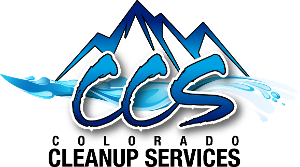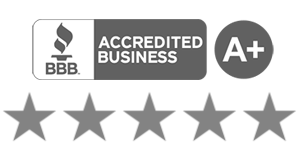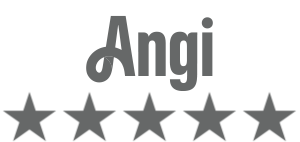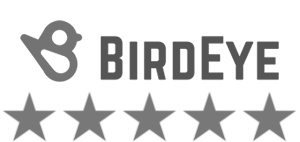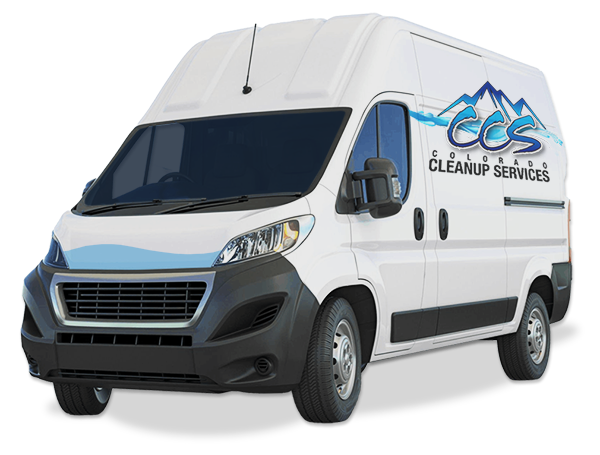Mold is a common household problem that can lead to health issues if left untreated. Mold remediation is the process of removing mold from your home to eliminate the health risks associated with its presence. However, many people who need mold remediation wonder whether it is safe to stay in the house during the process.
While the answer is not a simple yes or no, it is essential to know the safety aspects of staying in a house during mold remediation. Understanding the potential health risks and ways to maintain your home’s integrity during remediation can help you make an informed decision and keep you and your family safe and healthy.
Is it Safe to Stay in a House During Mold Remediation?
Key Takeaways:
- Mold remediation is the process of removing mold from your home to eliminate health risks.
- The safety of staying in a house during mold remediation depends on various factors.
- The potential health risks during mold remediation include respiratory issues, allergies, mold-related illnesses, and exposure to mycotoxins.
- Protective measures such as wearing personal protective equipment, proper ventilation, and containment procedures can minimize health risks during mold remediation.
- Maintaining your home’s structural integrity by preventing cross-contamination, addressing underlying moisture issues, and employing proper drying techniques is crucial during mold remediation.
Understanding Mold Remediation: A Brief Overview
If you suspect mold growth in your home, it’s essential to have a professional mold inspection to determine the type and extent of the mold problem. Once identified, the mold remediation process can begin.
Professional mold remediation is crucial, as it’s a complex and intricate process that involves several steps to ensure effective mold removal and prevent further growth. The process typically includes:
| Step | Description |
|---|---|
| Mold inspection | A thorough assessment of the mold problem, including identifying the type and extent of mold growth. |
| Containment | The use of physical barriers to prevent cross-contamination to other areas of the home during mold removal. |
| Removal of mold-damaged materials | Removing mold-infested materials that cannot be remediated, such as drywall, carpeting, or insulation. |
| Cleaning and disinfecting | Thoroughly cleaning and disinfecting all affected surfaces to ensure complete mold removal. |
| Proper ventilation | Ensuring proper ventilation during and after the remediation process to prevent moisture buildup and further mold growth. |
| Drying | Employing proper drying techniques to ensure the structural integrity of your home is restored. |
It’s important to note that DIY mold remediation is not recommended, as it can lead to further contamination and potentially exacerbate health risks.
Professional mold remediation companies have the necessary training, equipment, and expertise to ensure safe and effective mold removal. They can also identify and address underlying moisture issues that may have contributed to mold growth in the first place.
In the next section, we will explore the health risks of mold exposure during remediation and the importance of taking protective measures during the process.
The Health Risks of Mold Exposure During Remediation
During mold remediation, exposure to mold can pose significant health risks. Prolonged exposure to mold spores can cause respiratory issues, allergies, and mold-related illnesses that can range from mild to severe.
Respiratory issues that may arise from mold exposure during remediation include coughing, wheezing, and shortness of breath. If you already have a respiratory condition such as asthma, exposure to mold can worsen your symptoms and trigger an asthma attack.
Allergies are another common health risk associated with mold exposure during remediation. Exposure to mold can cause allergic reactions such as sneezing, runny nose, and itchy eyes. People with pre-existing allergies are more susceptible to these symptoms.
In some cases, exposure to certain types of mold can cause mold-related illnesses. These illnesses can range from mild to severe and may include symptoms such as headaches, fatigue, and skin irritation.
It is also important to note that certain mold strains produce mycotoxins, which are toxic substances that can cause serious health problems if ingested or inhaled. Mycotoxins can cause neurological issues, respiratory problems, and other health complications. If you suspect that your home has black mold, it is crucial to contact a professional mold remediation company immediately to address the issue.
If you are experiencing any symptoms of mold exposure during remediation, it is important to seek medical attention. Your doctor can help determine if your symptoms are related to mold exposure and provide appropriate treatment.
Minimizing Health Risks: Safe Practices During Mold Remediation
If your home requires mold remediation, it is essential to follow safe practices and protective measures to minimize health risks to both occupants and remediation personnel. Here are the key protective measures that should be followed during mold remediation:
| Protective Measures | Why It’s Important |
|---|---|
| Wearing Personal Protective Equipment (PPE) | Mold spores can cause respiratory issues and allergies, so it’s essential to wear PPE to protect from inhalation. |
| Containment Procedures | Containment procedures prevent cross-contamination and ensure that mold spores do not spread to unaffected areas of the house. |
| Proper Ventilation | Proper ventilation is necessary to prevent mold spores from becoming airborne and to ensure safe indoor air quality during remediation. |
Wearing PPE is crucial during mold remediation. Mold spores are microscopic and can easily become airborne during the remediation process. Respiratory protection, such as N-95 respirators, should be worn to prevent inhalation of mold spores. Additionally, disposable gloves, eye protection, and protective clothing should be worn during the remediation process.
Containment procedures should be used to prevent the spread of mold spores to other parts of the house. Plastic sheeting and tape can be used to seal off the affected area, and negative air pressure machines can be used to ensure that mold spores do not spread to other parts of the house.
Proper ventilation is essential during mold remediation. Inadequate ventilation can cause mold spores to accumulate in the air, leading to unsafe indoor air quality. An exhaust fan can be used to vent air outside, while an air scrubber can be used to filter the air and remove mold spores.
By following these protective measures, you can help ensure that the mold remediation process is conducted safely and efficiently, minimizing health risks to both occupants and remediation personnel.
Maintaining Home Integrity During Mold Remediation
When it comes to mold remediation, it’s not just about removing the mold but also maintaining the structural integrity of your home. Here are some essential steps to take to ensure your home stays safe and secure during the remediation process.
Preventing Cross-Contamination
Cross-contamination is a real risk during mold remediation, and it’s crucial to prevent it from happening. This can be done by setting up physical barriers or “containment zones” using plastic sheets or curtains to separate the affected area from the rest of the house. This ensures that mold spores from the contaminated area don’t spread to other parts of your home.
Addressing Underlying Moisture Issues
Mold thrives in moist environments, and it’s essential to address any underlying moisture issues that may have caused the mold growth in the first place. This could include fixing leaky pipes or roofs, improving ventilation, or reducing humidity levels in your home. Addressing these issues will not only prevent future mold growth but also help maintain the structural integrity of your home.
Proper Drying Techniques
After the mold has been removed, it’s crucial to employ proper drying techniques to ensure that your home is thoroughly dried out. This could include using dehumidifiers, fans, or even opening windows and doors to improve ventilation. By ensuring that your home is properly dried out, you can prevent any further damage to your property and maintain its structural integrity.
| Tip | Description |
|---|---|
| Use fans | Place fans in the affected area to aid in the drying process. |
| Dehumidify | Use a dehumidifier to reduce humidity levels in your home. |
| Open windows and doors | Letting fresh air in can help dry out your home. |
By following these steps, you can ensure that your home stays safe and secure during mold remediation.
Conclusion
In conclusion, it is crucial to prioritize safety during mold remediation in your home. By understanding the potential health risks and taking appropriate measures to minimize them, you can effectively navigate the remediation process and ensure the long-term health of your property and occupants.
Remember that hiring a professional for mold inspection and removal is essential for a thorough and safe remediation process. Additionally, following proper protective measures, such as wearing personal protective equipment and implementing containment procedures, can help minimize health risks.
It is also important to address any underlying moisture issues that may have caused the mold growth and employ proper drying techniques to maintain your home’s structural integrity. By taking these actions, you can prevent cross-contamination and ensure that your home remains a safe and healthy environment for you and your loved ones.
Thank you for reading, and we hope that this article has provided valuable insights into the importance of safe and responsible mold remediation.
FAQ
Is it safe to stay in a house during mold remediation?
Staying in a house during mold remediation can pose health risks if not done safely and responsibly. It is important to follow proper protective measures and hire a professional to ensure the safety of occupants.
What is the mold remediation process?
The mold remediation process involves hiring a professional for mold inspection and removal. It typically includes steps such as containment procedures, proper ventilation, and addressing underlying moisture issues.
What are the health risks of mold exposure during remediation?
Prolonged exposure to mold during remediation can lead to respiratory issues, allergies, and mold-related illnesses. Certain mold strains may also produce harmful mycotoxins that can have detrimental effects on health.
What are the safe practices during mold remediation to minimize health risks?
It is important to wear personal protective equipment (PPE), implement proper containment procedures, and ensure adequate ventilation during mold remediation. These measures help protect both occupants and remediation personnel.
How can I maintain my home’s integrity during mold remediation?
To maintain your home’s integrity during mold remediation, it is crucial to prevent cross-contamination, address underlying moisture issues, and employ proper drying techniques. These steps will help restore the structural integrity of your home.
Denver Clean-up & Restoration Services
With over 150 years of combined experience, the Colorado Cleanup Services, Inc. team has the knowledge, skill, and commitment necessary to handle any emergency cleanup services you may require. From flood and fire damage restoration to sewage backup, and coronavirus cleanup services in Denver, CO, you can always turn to us when you need deep, disinfecting cleaning for your home or business.
Family-owned and operated, our cleaning company is proud to provide the services of trained and certified technicians to all our clients. Our impressive team knows what it takes to return damaged properties to their original condition with the highest level of professionalism. Don’t settle for anything less when you require high-quality disaster recovery services. Our team is available 24 hours a day, 7 days a week to ensure you receive the help you need when you need it give us a call: 303-237-4406.
